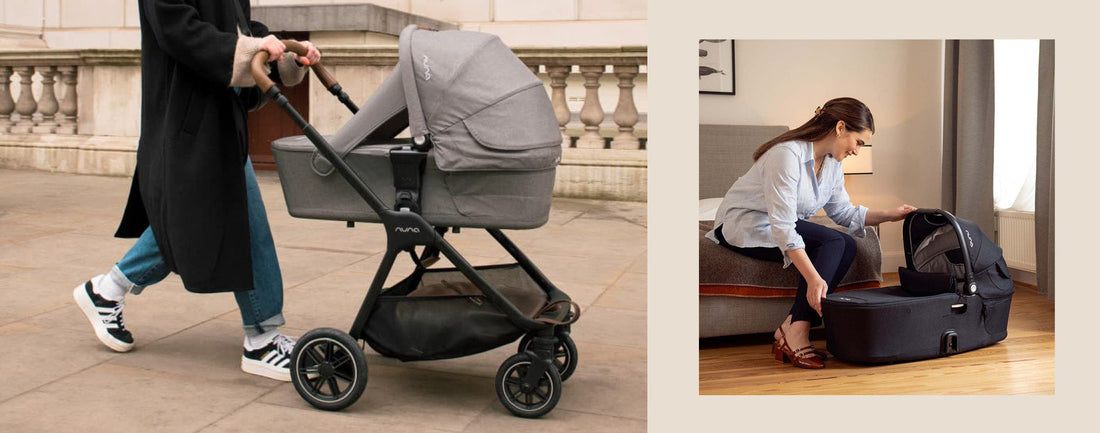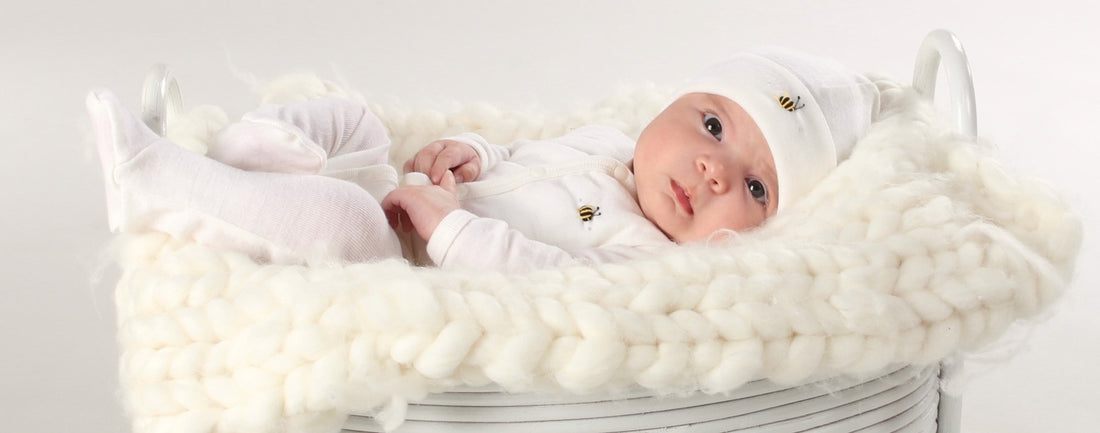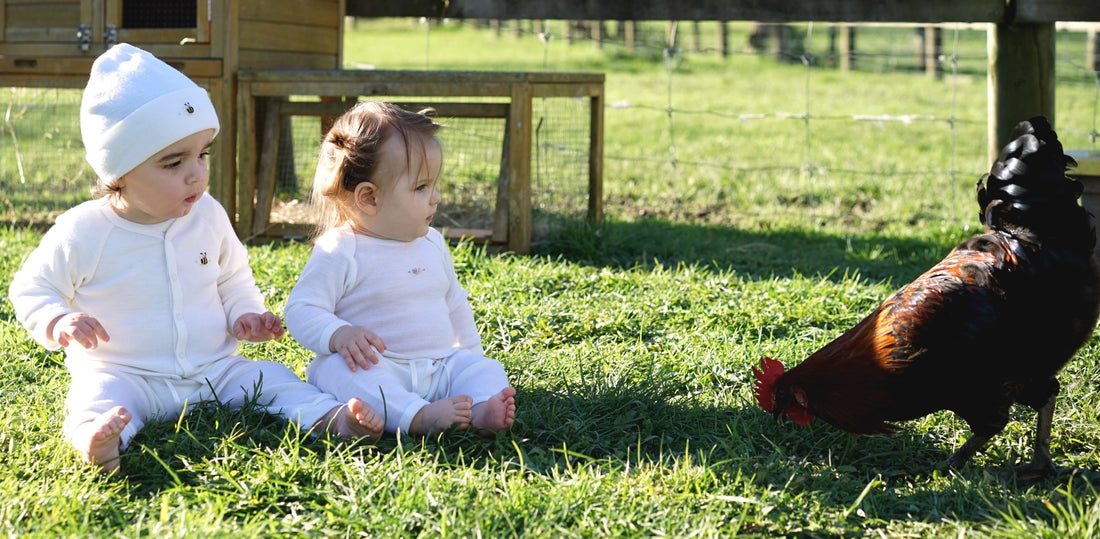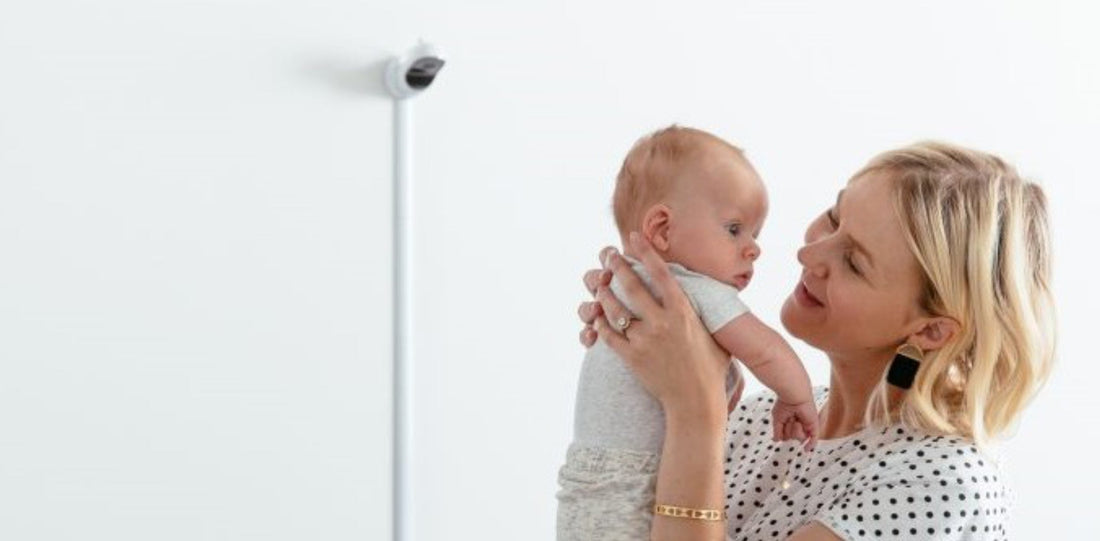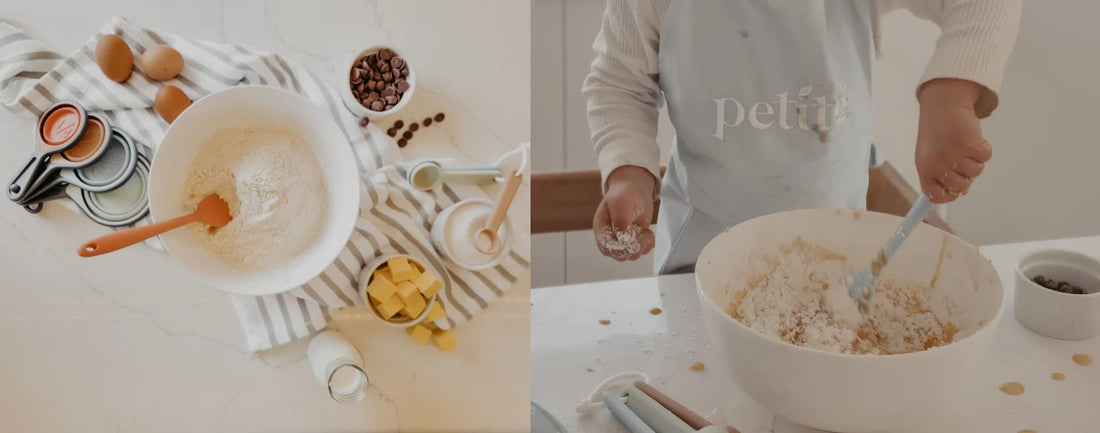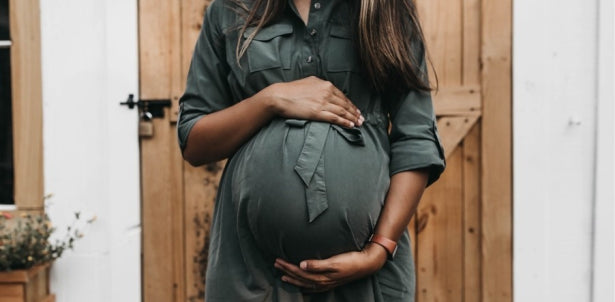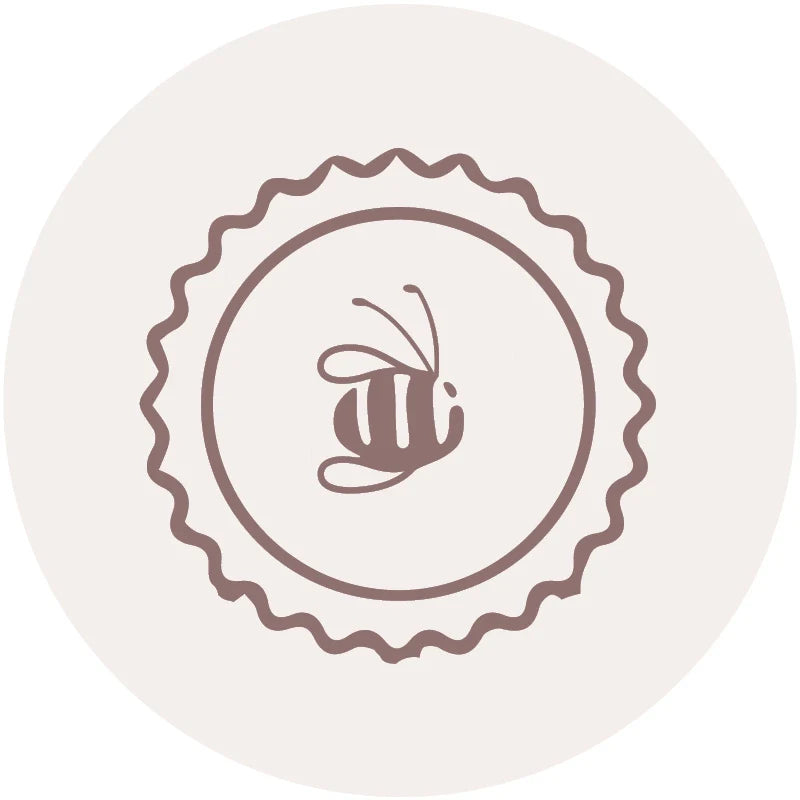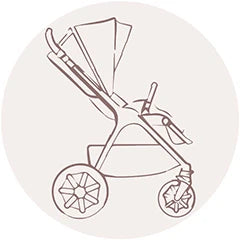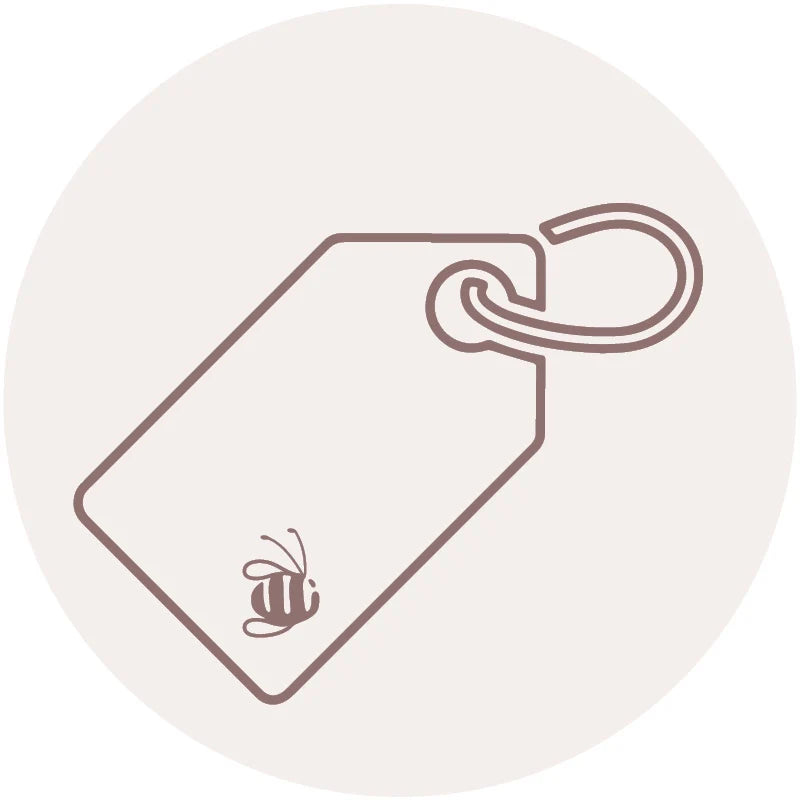Post
Why Carrycots Are One of Our Best Sellers
Carrycots – Essential or Nice to Have? How a Carrycot can make a new parent’s life easier When preparing for your baby’s arrival, the list of must-have essentials can seem endless—carrycots, capsules, bassinets, and buggies, all competing for your attention. Among these, carrycots often sit in a grey area, leaving parents wondering if they’re truly necessary. However, there are several reasons why carrycots are one of Dimples’ best-sellers, and we’re here to explain why they could make your life a whole lot easier. What is a Carrycot? A carrycot is a lightweight, portable bed designed for babies up to around three to six months old (or about 10kg). Unlike a traditional bassinet or Moses basket, a carrycot attaches to your stroller, making it perfect for sleeping while you’re out and about. Its flat, firm mattress ensures your little one can lie down comfortably, and the design keeps them safe, supported, and relaxed while they nap. As your baby grows, they’ll eventually outgrow the carrycot, but for the first few months, it provides a cosy, familiar space that’s easy to move with you. Why Do You Need One? You’ve likely already invested in a capsule for car trips and a bassinet for naps at home, so you might be wondering where a carrycot fits into the mix. Let’s take a closer look at the benefits it offers: Carrycots vs. Capsules for Sleeping Capsules are often designed to easily attach to your stroller for convenience, allowing you to transfer your sleeping baby from the car to the stroller without waking them up. However, experts caution against leaving your baby in a capsule for extended periods. Babies need to lie flat to keep their airways open, and when they're in a capsule, their heads can flop forward, which could compromise their breathing. A carrycot, however, provides a flat surface for your baby, ensuring proper alignment and safe sleep. While it can be tempting to leave your baby in the capsule for longer outings, a carrycot offers a far safer sleep solution for extended naps or trips to the park. Moving them from capsule to carrycot after a quick car trip helps keep their sleep environment safe and comfortable. Take a Walk While They Snooze One of the perks of a carrycot is the ability to get outside and enjoy some fresh air while your baby naps peacefully. After feeding or playtime, simply attach the carrycot to your stroller, and off you go! The gentle movement of the stroller, combined with the outdoor sounds, is often just the right combination to lull your little one into a restful sleep. Carrycots are designed to be outdoors-friendly, with weatherproof fabrics, adjustable canopies, and compatible rain and sun covers, so your baby stays protected no matter the weather. Even better, when your baby is deep in sleep, you can easily unclip the carrycot from the stroller and bring them inside to continue their nap. That means you get to enjoy a quiet moment to yourself while your baby stays snug and safe. Carrycots vs. Portacots for Overnight Stays When it comes to overnight visits, whether to Grandma’s house or a weekend getaway - a full-sized portacot can be a hassle to pack and set up. A carrycot, on the other hand, is compact and easy to transport, making it the ideal sleep solution for short stays. With a firm mattress and familiar surroundings, your baby is more likely to settle quickly in a carrycot, even in a new environment. Carrying a bulky portacot for a quick trip or family visit can feel like overpacking, especially when you have a simple, lightweight carrycot that does the job just as well. The convenience of clipping it onto your stroller for a walk, and then using it as a portable bed for overnight stays, gives you the best of both worlds. Say Goodbye to the Bassinet A bassinet or Moses basket can take up a fair amount of space in your home, and while they're lovely for the first few months, they’re not always necessary if you have a carrycot. Many parents find that a carrycot serves as both a primary sleep spot at home and a portable solution for outings. Since a carrycot is designed for safe sleep, you can use it as your baby’s designated napping spot - whether at home, in the park, or at a friend’s house. Plus, since it’s only useful for a limited time, you get the most out of it by making it your go-to sleeping solution in those early months. Carrycots vs. Lie-Flat Strollers Many strollers are suitable for newborns, but most require the baby to be strapped in. If your baby is swaddled or sleeping peacefully, it can be a hassle to unstrap them and disrupt their comfort. With a carrycot, you can avoid all those buckles and straps. Simply place your baby in the carrycot, and you’re good to go - no need to worry about disturbing them or removing their swaddle. This makes the carrycot a much easier and more comfortable option for those first few months. What to Look for in a Carrycot Choosing the right carrycot is about more than just size - it’s about convenience, comfort, and safety. Here are some key features to look for: Certified for overnight sleep: If you plan to use the carrycot for naps and nighttime sleep, ensure it’s certified for overnight use. Weatherproof accessories: Look for a carrycot with a generous canopy, plus optional rain and sun covers, especially if you’ll be using it outdoors. Easy to carry: While the carrycot will often be attached to your stroller, you’ll also need to carry it at times. Make sure it has sturdy, comfortable handles that make it easy to transport. Easy care: Babies can be messy, so choose a carrycot with machine-washable components like the mattress cover or liner. Easy to connect: You don’t want to struggle with complicated clips when your baby is having a fussy moment. A carrycot that’s easy to attach and detach from the stroller will save you time and frustration. Compatibility: Ensure the carrycot fits securely on your stroller. The combination of a carrycot and stroller is crucial, as you’ll use it for many months to come. Final Thoughts While not essential for everyone, many parents find it a really useful addition in those early months – giving their baby a safe, flat sleeping space that’s easy to move from stroller to indoors without disturbing precious naps. Whether you’re out for a walk, visiting family, or just needing somewhere for baby to rest during the day, a carrycot can help simplify life a little. If you’re unsure whether a carrycot is the right fit for your family, feel free to get in touch or pop into store – we’re always happy to help you figure out what’s best for you and your baby. We have some amazing bundles to choose from, as well as a range of choices to suit you. Check out Dimples’ range of carrycots here.
Learn moreProducing quality products without the compromises
Producing quality products without the compromises Our commitment to our workers With most of the world’s fast fashion garments now made in Asia, the commitment to fair labour globally is sketchy at best. We believe it’s entirely possible to make a great product while caring about the environment, its workers and your little one too. Dimples’ dedication to producing high-quality New Zealand-made clothing hasn’t changed one bit since we started in 1992. Here’s how we put people at the heart of our product. Fabrics that put workers at the forefront From the origins of the raw materials through to dying and fabric manufacture, we choose materials that put people and the environment first – every step of the way. Homegrown merino – by choosing cosy merino grown right here at home, we know our local workers are getting well looked after. From fair working conditions on our Kiwi sheep stations to fair prices for the merino, New Zealand standards are adhered to throughout the process. Certified organic cotton – creating beautiful cotton without chemical fertilisers and pesticide protection is uncommon – and that’s a problem. Not only are farmers put at risk when they have contact with these chemicals, the run-off seeps into the waterways, affecting the food production and health of the whole community. We know that organic practices are best. From fibre to fabric – The majority of our fabrics are produced by ABMT in Melbourne, where our Aussie neighbour’s high labour standards and strict health and safety policies are adhered to. We’re proud to align with an ethical employer that also leads the way with its environmental policies. Production of the Dimples range Our ethically sourced fabrics aren’t jetted offshore for low-cost garment production. We employ a local team that puts our clothing and accessories together with love and care. Supporting the local economy and our workers With our strong focus on homegrown goods, we support fair employment, contribute to the local economy and keep our industry alive. Dimples employs skilled, full-time machinists that work from home, our garment cutters are just down the road from our head office and all our doming is done by a local business too. Encouraging work-life balance With many of our garments featuring our signature hand-embroidered bee and English rose, we have plenty of delicate embroidery work year-round. Our experienced embroiderers work from home and have the flexibility to fit bees and roses around their daily lives. Supporting diversity and gender equality We are an ethnically diverse team, with five nationalities currently represented by our employees. Dimples was founded and is still run by Jane Anne – women feature strongly in our leadership. Brands we stock align with our people-loving ethos We support and stock brands with a similar ethos to ours, making it easy for you to shop responsibly. Nuna With a focus on ‘creating consciously’, their emphasis on quality production is strong. As a result, Nuna conforms to OHSAS 18001 which is an international certification putting employees’ health and safety at the forefront. To read more about how Nuna products are responsibly made, visit them here . Stokke As a member of the Ethical Trading Initiative Norway , Stokke is an industry advocate for ethical best practices. Each step of the way, every supplier or partner of Stokke co-signs a code of conduct agreement to ensure proper working conditions, compensation and production methods are followed. Read more about their commitment to ethics and the environment here . Snuggle Hunny Snuggle Hunny is committed to sustainability with GOTS Certified organic cotton garments and a shift to compostable mailers, while offsetting carbon emissions through Greenfleet . The brand supports local communities by donating products to NICUs and charities like Sydney Children's Hospital and HeartKids, with 10% of Heart Collection sales going to support heart health in children. These efforts reflect Snuggle Hunny's dedication to both the environment and giving back to those in need. Read more about their sustainability efforts here . Doomoo Doomoo is all about sustainability, creating durable, multifunctional products designed to last. The brand focuses on using eco-friendly materials, and ensures much of their manufacturing is done locally in Europe. By prioritizing local sourcing, Doomoo reduces their environmental impact and supports regional economies. They also offer spare parts and care instructions to help families keep their products in top shape for years to come. Read more about how Doomoo is making a sustainable impact here. Clothing your babe minus the guilt Sweatshops and harmful production practices do not have to be the norm in our industry. As a brand, we have the power to put people (big and small) at the heart of what we do, and that’s proudly what we continue to do.
Learn moreOur Commitment to the Environment
Our commitment to the environment How we look after your little one without harming the planet While caring for your precious bundle is often the first thing on your mind, it doesn’t need to have a negative impact on our environment. At Dimples, we partner with like-minded manufacturers and brands to offer ethical, sustainable products. We know that it’s possible to look after your babies without causing harm to the very planet they’ll inherit. Here’s what we do differently... Earth-friendlier fabrics Fabric choice is the starting point for us in doing our bit for the environment. Going for natural over synthetic is better for both your babe and the environment – synthetics are made from fossil fuels and cause lots of pollution. Nature does a pretty good job of providing us with amazing fabrics – merino wool from New Zealand sheep (which is both sustainable and renewable) and pure organic cotton that is free of chemicals. Our fabrics meet these standards: Fairtrade certified organic cotton and Australian Certified Organic – Our cotton is Fairtrade certified which shows farmworkers have decent working conditions and are paid fair prices for their produce. The organic certification means the farming process causes less stress on the environment. Without organic practices, toxic chemical residue ends up in local rivers, waterways and lakes, and harms the wildlife and people who live there. Oeko-Tex Standard 100 – this certification takes ‘certified organic’ one step further. To meet Oeko-Tex Standard 100, our fabric is tested and certified to be free from harmful levels of more than 100 substances known to be damaging to our health. We think this is pretty important for your babe’s delicate skin. Responsible Wool Standard (RWS) – this standard not only protects our adored merino producers but also the land they graze on. This is a globally recognised certification that covers sustainable grazing methods to protect our land. Responsible packaging While ruling out packaging completely is a difficult feat with stock coming in and out of stores and warehouses, we’re focussed on minimising what we use through recycling and reusing. Here are some of the things we do: Buy recycled boxes – this saves trees and the huge amounts of water taken to grow them (and make the boxes). Reuse boxes for stock – our boxes see multiple trips back and forth to shops before they end up in the recycling. Use tissue paper for packaging – we only wrap your precious purchases in recyclable tissue paper. Reuse plastic bags from suppliers – sometimes we can’t avoid plastic. If that’s the case, we make sure it gets reused rather than binned. Reducing environmental impacts with our manufacturing partner Wastewater is a huge problem internationally, with tonnes of toxic, dye-filled wastewater dumped into streams and waterways without being treated. There’s little regulation or policing of this, which has led to a lot of waterways in China and India becoming contaminated. Our textile partner ABMT is an innovative and environmentally-friendly manufacturer that prides itself in reducing the huge environmental impacts usually associated with making textiles. Its Melbourne facility has an on-site water treatment plant, so up to 85% of water in the factory is reused within the manufacturing process or through a third-party recycled water programme. ABMT also holds an ISO1401 Environmental Management System certification, which shows environmental impacts and sustainability are front and centre of its operations. Slow fashion for generations of babies Fast fashion sees a lot of textiles ending up in landfill. With little ones growing as quickly as they do, baby clothes too often join the growing piles of waste. That’s why we focus on timeless designs and fabrics that last, so your Dimple’s products will last through generations of babies. Brands we stock care too We partner with brands who share our environmental ethos. Stokke – throughout the company’s history, Stokke has made every effort to use environmentally-friendly and biodegradable materials. They don’t rest on their laurels but continue to innovate and explore new ways of helping preserve the planet. Read more about the Stokke commitment to ethics and the environment here . Nuna – Nuna is focused on ‘creating consciously’ with mindful manufacturing and materials. They believe in designing better gear for your little one and at the same time improving the world in which your child will grow up. Read more about how Nuna goes above and beyond here . Forget any trade-offs – you can have both Looking after our environment doesn’t mean you need to compromise on quality or choice. We’ve hand-picked the best fabrics, manufacturers, and suppliers to make shopping with a conscience easy.
Learn moreWhat you need to know about baby monitors
Keep your eye on bubs while they're fast asleep Becoming a parent is a rollercoaster of emotions and new experiences. You’ve spent nine months with your baby tucked safely in your belly, and now that they've made it Earth-side, you can’t wait to bring them home. When it comes to sleeping, you may have your mini-me in your room or nursery. At some point they will move into their own bedroom, and it’s quite natural to feel anxious about leaving your tiny human alone. That’s where baby monitors allow you to keep an eye and ear on your little one from anywhere in the house (outside too!). Baby monitors provide peace of mind for parents who worry that they might not wake when baby stirs or cries, signaling it’s time for a feed – or perhaps just stretching. In today’s tech-driven world, baby monitors are almost a given, and these days they come with lots of features. Here’s what you need to know when buying a baby monitor: Types of baby monitors Audio Sound-only monitors are essentially like a walkie-talkie – they’ll let you listen to your baby as they sleep. They focus on minimising background noise so you can hear cries and coos from the crib. Many audio monitors will light-up when your baby stirs, glowing brighter as their cries get louder. Video and audio Watch your baby – as well as hear them! These monitors work through a small camera mounted on the nursery wall or a flat surface beside baby’s crib. Night vision provides a clearer image when the lights are off, and touch-screen features let you zoom in or tilt the camera. Some can feed a live stream to multiple cameras, helping you keep an eye out from any room in the house. Wireless network Most monitors use radio-frequency transmission, but these digital monitors connect to your home Wi-Fi or mobile network. For example, the Owlet Cam lets you stream audio and high-definition video of your baby directly to your smartphone via the Owlet app. Some will send your device notifications when there has been a change in movement or sound. Key baby monitor features Like many technology-based products, baby monitors have advanced in leaps and bounds. Some have amazing add-ons which certainly make life easier, but there are some essential features you should consider: Rechargeable batteries . Pick a model that can recharge or be plugged in instead of relying on batteries.= Low-battery indicator . You can visually see when power is running low. Multiple and portable receivers . You may want a receiver that can move around the home with you. An extra handset is handy for when the other one is charging. Night vision. Unless you can see in the dark, a monitor with night vision will make it easier to see your sleeping baby – no matter what time of day or night it is. Light-up sound indicator . Look for a baby monitor with a light-up sound indicator, so if you’re on the phone, in a noisy room or don’t want to wake another sleeping family member, you can visually monitor your little one’s noise level. Sound and video interference filters . Background noises can make it difficult to hear your baby – and they’re not pleasant when amplified by a baby monitor. A sound activation feature will filter out white noise – and turn on when it detects your baby crying. DECT technology . Baby monitors that use common radio frequencies will pick up signals and interferences from all over the neighbourhood – not ideal. Digital enhanced cordless telecommunication devices (DECT) are more private because the frequency is less common than in other devices. Movement and room temperature sensors . This feature sounds an alarm when there has been no movement after a certain length of time, and when the room temperature goes above or below the range it has been set at. Talk-to-baby feature . Essentially like an intercom – this lets you soothe your baby from another room or communicate with your husband or wife when they’re with your little one. Lullaby and night light . Some monitors will play a tune to help your baby get to sleep. Some will also give off a soft glow which babies can find comforting in a dark room. Camera angle and mount . For monitors with video capabilities, consider where you want to place the camera (on a flat surface, in a clamp, on the wall) and whether you can remotely control the viewing angle. Multiple camera support . Set up multiple rooms with cameras that you can turn on or off as needed. Get a good night’s rest – sort of Being a parent can be stressful enough without running back and forth to check on your sleeping baby – especially at two AM! For some, a baby monitor might not be necessary – if your home is small for example – but parents looking for peace of mind should consider using one. There are models available that offer a combination of features, like Oricom’s Smart HD Dual Camera Baby Monitor . The smart baby monitor features dual lenses for standard and wide-angle viewing. Simply pair the camera to the FREE HubbleClub for Partners app, and you can view both feeds simultaneously on your smart device. Lull your little one to sleep with pre-loaded nature sounds, lullabies & audiobooks, soothe them with your familiar voice using Two-Way Talk, and even track nursery room temperatures with the touch of a button to ensure your newborn is always comfortable. The Oricom HD Dual Camera shoots in 1080p HD and with pristine infrared night vision, this baby monitor provides crystal clear monitoring, even in total darkness. The OBHDUAL is the reliable friend that makes bedtime easier for the whole family, with the camera feed viewable on your Smart Device at home (not included).
Learn moreChoosing the right baby carrier
Here’s everything you need to know about baby carriers Becoming a new parent comes with an overwhelming number of unanswered questions – one of which is how to choose the right baby carrier. Keeping your little bundle of joy close to you while running errands, visiting the grandparents or doing chores around the house might seem like a far-fetched idea at first, but with a baby carrier, you don’t have to choose between doing one or the other. There is a huge selection of baby carriers to choose from – everything from smaller models best suited to newborn babies through to adaptable carriers which can be used even into the toddler years. With so many options, it can make deciding on which one to buy a little daunting – especially if you’re a first-time parent. Let’s take a look at different styles of carriers, as well as a few tips for how to pick the right one for you and your baby. Types of baby carriers Ring slings Ring slings are a well-known and versatile style of baby carrier. They’re made from a length of fabric threaded through two rings. Ring slings are worn on one shoulder, spreading widely across your back to create a pouch for baby to sit in. With some models, extra shoulder padding can be added for long-term wearing. Because a ring sling offers a variety of different carrying positions, it can be used from newborn through to toddlerhood. For young babies, it supports the ‘C-shape’ curve they’re born with. Once the sling has been adjusted to fit you and bubs, it’s a simple matter of popping baby in and out. Ring slings are a great introductory carrier for new parents because they’re easy to use and can be stored in your nappy bag. Soft-structured carriers This style of carrier is a favourite with parents because of how easy it is to use and adjust. The basic design is a front panel where baby will be ‘seated’, a waist strap and two padded shoulder straps – all of which can be adjusted and secured with buckles to achieve a comfortable fit. Soft-structured carriers can be used for front, hip and back carrying, from newborns to toddlers. They carry your baby in an ergonomic upright position (rather than a hammock or cradle position), evenly distributing his weight over both your shoulders. Many have additional head support for younger babies or integrated infant boosters which can be easily removed as your baby grows – like this Nuna Cudl Carrier. They’re not quite as snuggly as wraps and can take time to work out the most comfortable position, but they’re super-quick to pop on and provide fantastic support for long-term wearing. Wrap slings or carriers A wrap – like this Aura Baby Wrap – is one of the most comfortable baby carriers to wear. For young babies, the swaddle-like design mimics the feel of the womb. The design consists of a long piece of specially-woven fabric that is wrapped, tied and moulded to your body and baby. You can use it in lots of different styles – front, side or back, on one shoulder or two. Some wrap snugly around your chest to distribute weight and others are more like a backpack. Most will fit all sizes, shapes and ages of babes. You’ll need to learn how to wrap, but with a little practice and patience, you’ll have it mastered in no time. Tips for choosing a baby carrier Baby carriers come in a wide variety of styles and features. Whatever carrier you choose, follow the usage instructions and safety advice in the manual, and always monitor baby when in the carrier to ensure proper airflow is maintained. When shopping for a baby carrier, here are some things you should consider: Longevity As your baby grows, your carrier will need changing features. Newborns like to snuggle in close with their head on your chest; toddlers want to see the world! Most carriers come with generous age and size ranges but it's essential to choose a carrier designed to fit your baby's size and age. Some parents opt for two carriers and others look for an alternative that can adjust to different ages. Fit and comfort One of the most important factors of a baby carrier is how well it fits. You want one that fits your newborn well and supports her safely. This means you’ll need to factor in weight, height, physiology and build. It should also be comfortable for both you and your baby. The seat of any carrier should allow your baby’s legs to be in the hip-healthy ‘M’ position. For you, think about how much back and shoulder support you’ll need for long-term wearing comfort. Most carriers are one-size-fits-most, can be easily adjusted and shared between parents. Other options come in different size ranges. Ease of use Regardless of what type of carrier you buy, it may take a little practice before using one becomes second nature. Some carriers require a multi-step process to get set up but can be easily stored in a nappy bag. Others may be easier to use but bulkier to transport. Easy to clean If you didn’t already know – babies are messy! Not all carriers can be machine-washed for easy cleaning – some need to be hand-washed or dry-cleaned. Be sure to check labels for washing instructions. Climate While physical contact is great for a boost of oxytocin (the love hormone) and bonding, all carriers will add heat. For warmer climates, lightweight and breathable fabrics are essential. For colder climates, heavier materials and padding are more appropriate. Organic and eco-friendly For those parents and babies with sensitive skin, or anyone looking for an eco-friendly carrier option, consider carriers with organic fabrics, colour grown cotton, unbleached fabrics, recycled materials, and non-toxic dyeing processes. Pick what’s right for you and your family Baby carriers are a great alternative to lugging a stroller in and out of your boot and navigating crowds. They’ve been shown to help promote bonding, improve postpartum depression and anxiety, and reduce crying. But ultimately, the perfect carrier for you and your bouncing baby is the style that you both find most comfortable. All carriers provide exactly what your baby is looking for – being close to you. Look at your budget, lifestyle, and who will be using the carrier to help you decide which styles to consider.
Learn moreTeething Baby? Your go to Survival Guide
The teething baby survival guide Long before you spot the pearly white poking out of your little one’s gum, you’ll typically be warned of its arrival by a grizzly babe. Teething can happen anywhere from three to twelve months and some babies are even born with teeth. The signs of teething vary hugely – mountains of dribble, ear-pulling, strange rashes, increased night-waking or general grumpiness. Whatever your baby starts to do, it helps to have some tricks up your sleeve. Chewy toys That’s right – dogs and teething babies love them equally. That’s because counter pressure on sore gums can help provide relief. Save the railings of the cot (and anything else they can get their gums around) by having some teething toys on hand. Textured flexible teethers that can be popped in the fridge like the Haakaa Rabbit Teether have the added benefit of cooling and slightly numbing the gums. Gnaw-friendly foods Some babies love having a big piece of something hard to chew on, like chilled cucumber, carrot, celery or a hard rusk. Special teething rusks can usually be picked up at the supermarket or you can try making your own. As with any hard foods, make sure you keep a close eye on your little one as pieces can break off and become a choking hazard. Keep it cool Pop frozen fruit or veg in a teething feeder, like this one from Haakaa, to soothe sensitive gums. Make sure they’ll be soft once they melt – try bananas, ripe pears or stone fruit, and well-steamed veggies. Sometimes teething can affect your little one’s appetite too, so these are a great way to help get extra nourishment in when mealtimes are tough. The magic necklace Amber teething necklaces have been around for hundreds of years, and many parents swear by them! The theory is that succinic acid, a component of amber, is absorbed into your baby’s skin to soothe teething woes by reducing inflammation and promoting healing. While the jury is still out on whether they deliver on the magic promised, it’s worth a try! If nothing else, your babe gets a cute necklace out of it. Be sure to look for necklaces with individually knotted beads (for extra safety if broken). Teething and toothbrushing How about a teething aid that helps little ones get the hang of brushing their teeth at the same time? A teething toothbrush like this cute toothbrush will gently massage painful gums while cleaning any little teeth with its soft silicone bristles. Cuddles and comfort Sometimes all the teething aids in the world just won’t cut it and your baby just needs some extra cuddles and comfort. While it might seem like teething pains ramp up at night, it’s more likely that extra night-waking can just make it feel worse – to you! In the meantime, try and relish those extra snuggles (hard to do at 3 am, we know!) The last line of defence If chewing, rubbing and gnawing cool foods don't do the trick, it might be time to break out the liquid paracetamol or ibuprofen. Always check with your GP or Plunket Nurse before administering any medicine, but a mild form of pain relief or anti-inflammatory can sometimes make all the difference. If you’re not quite ready to go down the medication route just yet, a natural alternative like Teething Tamer can provide natural, organic pain relief, which is easily applied externally (making it extra easy for little ones) and can be used from three months onwards.
Learn moreHealthy Eating - Kids in the kitchen
Kids in the kitchen – building a foundation of health I am hugely passionate about building a strong foundation of health for children, so that they don’t spend a large chunk of their lives attempting to undo bad habits or with chronic health conditions. One really impactful way to do this is to teach them how to cook nutritious home cooked meals from scratch. This builds confidence in the kitchen and is an incredibly valuable life skill to have so that when they eventually leave home they know how to cook and won’t need to rely on takeaways and nutritionally poor foods. It is also a really nice way to mindfully spend time with your children in a way that is really fun for the whole family. There is continually more emphasis being placed on the importance of teaching children to eat healthy nutritious foods, due to the prevalence of childhood obesity, the behavior and learning implications of nutritional deficiencies and obesity related health issues. Did you know that one in nine of our New Zealand children are classified as being obese? Our childhood obesity rates really highlight the importance of education for children about nutrition and how to cook homemade meals. As a parent it is often a battle to get children to eat healthy foods, they are inundated with advertising and clever marketing that promotes and encourages less than ideal foods, such as sugar laden cereals and juices with their favorite cartoon characters, or sports heroes on the packaging. It is everywhere you look, and in our busy modern society takeaways have become the norm and not just a treat anymore. As a busy mum of four myself I have felt plenty of mum guilt at times for looking for easy meal options that aren’t as nutritious as I would like out of time constraints and food preferences of my children. Thankfully now I have a far less idealistic view on nutrition for my family and realise that there is no such thing as being the perfect Mum and that it is perfectly healthy for families to also have treat foods, and to enjoy them occasionally without guilt while ensuring majority of the time they are eating well. Teaching my own children, and others at a local primary school how to cook different meals has been a really rewarding experience. Children love to learn through ‘doing’ and are far more receptive to trying new foods when they are involved in the cooking process. One of my favorite things to do it to write a list of their favorite foods, this is very predictable with kids and generally consists of pizza, burgers and fries then discuss how we can make these foods at home and what we can do to add in extra nutrients. For example, Pita pizzas with different herbs, vegetables and homemade pizza sauce, burger patties with mince and grated vegetables, hand cut and oven baked kumara fries etc. You can make this really fun by making a recipe together, formulating a shopping list and letting them help find the ingredients, my three-year-old loves this! There are so many great cookbooks and websites that offer great ideas and tips these days. Some of my favorites include. A great resource for all things vegetables including nutritional information, preparation tips, and educational resources https://www.vegetables.co.nz/ A great resource of recipes & children’s goal setting charts for healthy eating https://www.healthykids.org.nz/ A personal favourite for lots of delicious kid friendly nutritious recipes would have to be Nadia Lim’s Kid section on her website https://nadialim.com/?sfid=974&_sft_meals_courses=kid-friendly For my older boys one activity that they really loved from around the age of five was picking a country, then looking for one of their traditional dishes and cooking it. The most loved one that was often repeated was Mexican fiesta night with tacos, pepitas and guacamole. This is a really fun way to get children in the kitchen and trying new foods. I have also found meal subscriptions like HelloFresh great for the older kids as everything they need including a simple recipe card is all included. They get really excited when they are making dinner themselves and it creates a huge feeling of accomplishment in them and also as a mum! Other skills that are strengthened when it comes to cooking with children include basic maths in younger children through counting and measuring. This also builds communication and language skills by discussing ingredients and recipes. Pre-schoolers are well known for being fussy eaters, encouraging them to explore different foods and textures by involving them in meal time preparation can really help to broaden their palate. You can also talk about how healthy foods help us to grow and the differences between different foods such fruits and vegetables, or for older children carbohydrates, protein and fats. This can also be a great time to explore mindful eating by engaging the difference senses during food preparation. Exploring the different appearances, textures, smells, tastes and sounds of food, exploring this is a wonderful way to be engaged for children and parents Most importantly have fun with it, you’re teaching your children an incredibly important life skill that will benefit them for years to come, instilling independence and not to mention eventually some time out from cooking yourself – win,win! Kylie Stowe @melawholefoods Pita Pizza Serves 4 This is a firm favorite amongst my children and was also one of the most loved in my kids cooking & nutrition classes. It is really fun to head to your local farmers market on the weekend and let the kids pick some different ingredients to try, it is also a great way to learn about the different seasons when different produce is available. The recipe below is for a basic pita pizza as a guide but have fun with this and let the kids build their own and try new things. Ingredients - 4 wholemeal pita - 4 tbsp of tomato paste - 2 handfuls of basil leaves - 16 cherry tomatoes - 1 sliced smoked chicken breast - 1 sliced capsicum - 1c of mozzarella cheese Method 1. Preheat the oven to 180c fan bake, and line a baking tray with baking paper. 2. Place the pita bread on the tray, top with tomato paste, then basil. Equally arrange the other ingredients on the pita. Top with cheese. 3. Bake for 10 minutes, or until golden. Enjoy! These are really nice served with salad.
Learn moreMotherhood: Beyond the Fourth Trimester
Beyond The Fourth Trimester - A Sustainable Approach To Health Once the first few months with your new baby have passed you might be feeling like the haze of those early weeks has passed. You also might not be there just yet, just as each baby is different so is each pregnancy and the subsequent postpartum period. This is why it is important to be mindful of not judging how well you are doing based on other mothers who might appear to be completely back to normal with a baby who sleeps all night. If you are still breastfeeding, many mothers report a drop in milk supply at this point often saying that they no longer feel like their breasts are as full. This is something I experienced with my first baby and thought it meant I was losing my milk supply. It is normal for the initial fullness and engorgement to diminish as your milk supply is more established at this point, and your body has adjusted to supplying what your baby needs. If you do ever feel concerned by this your Plunket nurse, local lactation consultant or the La Leche league are a wonderful source of support & encouragement. Once those exhausting early months have passed many of the mothers I work with are keen to start focusing on reclaiming their pre-pregnancy bodies and to start dieting and exercising. Focusing on good nutrition and consistent exercise is hugely beneficial and has many positive health impacts such as increased energy, better sleep, improved mood and changes in body composition. What is really important to be mindful of, is that changes in diet and physical activity are best to be done with an incremental approach to minimise the chances of under-fuelling yourself, drops in milk supply, injuries and adding too much pressure on yourself. It also allows you to build sustainable health habits that you are more likely to maintain long term. I always recommend an appointment with a postpartum trained physiotherapist. They can assess your posture for diastasis recti (tummy muscle separation) and guidance on pelvic floor exercises. Women who have had caesareans often think because they haven't had a natural birth they don't need to worry about pelvic floor exercises - this isn't the case, pregnancy still takes its toll on the body so re-strengthening the pelvic floor after carrying a baby is important for all mothers. Working with a personal trainer that specialises in postpartum exercise is a great idea. They can ensure your exercise technique is correct to avoid injury and set an exercise program that is suitable for your current fitness level that will be mindful of the changes that need to be made to a fitness program based on your requirements postpartum. When looking at dieting I always encourage my Mum’s take a non-diet approach to focus on improving health not through restriction but with healthy nutritional choices that improve their health status not diminish it. To achieve this we focus on a nutritional approach that has a strong focus on nutrient repletion to help the body to replete nutrients that were preferentially supplied to their growing baby. Focusing on a diet full of whole unprocessed foods is the foundation for this. Most women find that this approach is very empowering, it leads to better satiety and self-regulation of eating over restriction then binge eating. When it comes to improving your diet always aim for progress, not perfection, and most importantly enjoy your meals! Adequate protein intake is essential for tissue repair and rebuilding especially when exercising. Sources of protein include meat, chicken, seafood, eggs, legumes nuts and seeds. Protein also helps to keep you feeling full for longer. I use and recommend Clean Lean Protein powder for smoothies as it is perfectly safe for breastfeeding mums. You can use the discount code ‘mela’ to save 15% at nuzest.co.nz . Eating plenty of colourful vegetables and some fruits (eat the rainbow!) is important to supply essential vitamins, minerals, phytonutrients, fibre and carbohydrate. I aim to have three fist-sized servings of vegetables with lunch and dinner. It is important to supply yourself with some complex carbohydrate for energy and to assist with glycogen repletion after exercising. Some good sources are pumpkin, yams, kumara, and whole grains such as brown rice and quinoa. Don't forget to incorporate healthy fats with each meal. Fats have been demonised and avoided for so long that many people are not aware of how important adequate fat intake is for health. Dietary fat is essential for the absorption of many nutrients, production of certain hormones, the supply of energy and support of cell growth. Good sources of healthy fats include oily fish such as salmon, extra virgin olive oil, hemp seed oil, avocado, nuts and seeds. Lastly don't forget to drink your water! Aim for two glasses on rising then another 2 litres throughout the day and more when exercising. If you are a breastfeeding mum aiming to have a glass of water with each feed I find keeping a water bottle close by during the day and for those night feeds is a great idea - it’s thirsty work! Kylie Stowe @melawholefoods Postpartum Nourish Bowl Serves 1 Ingredients 120-150 grams of cooked sliced meat (or vegetarian alternative) 2 cups of salad greens 1 cup of an assortment of diced colourful vegetables 1 palm-sized serve of cooked complex carbohydrate (pumpkin, yams, brown rice, quinoa, kumara) ¼ - ½ of an avocado or 40 grams of Feta 1 tbsp of hummus 1tbsp toasted pumpkin & sunflower seeds 2 tbsp of dressing of your choice. Method Arrange all of the ingredients in a bowl, season, drizzle with dressing and enjoy! My favourite dressing is made with extra virgin olive oil, apple cider vinegar & wholegrain mustard. To change up the flavours you can coat your protein in different herbs and spices the one pictured is Moroccan chicken.
Learn moreMindful Meal Prep for Expectant Mums
In today’s busy modern society, the importance of sitting down together as a family at meal times and eating together and sharing about your day is a lost tradition for many. It is instead often a time that is busy, chaotic, and full of distractions with parents and children eating dinner at different times. There has been a plethora of research conducted around the benefits of family meal times, these benefits are said to include reduced rates of obesity, that adults tend to eat more slowly and often consume less food because they are engaged with other family members and discussion. This leads to less fast-paced mindless eating, chewing food adequately, and time for satiety ques to signal you are full more effectively. Something as simple as slowing down at meal times and chewing food effectively is an incredibly powerful health habit as this allows for the first phase of digestion to happen more efficiently. Cephalic phase digestion, meaning ‘of the head’ occurs at the sight, smell and taste of food and results in the excretion of approximately 20% of the gastric secretions required for digesting foods. Being mindful to slow meal times makes a huge difference in allowing the body adequate time for `these digestive phases to take place, chewing food is an incredibly important part of this process as it not only begins the mechanical breakdown of food but allows foods to be effectively mixed with saliva that is full of enzymes required to break down and digest foods. As a busy mum of four myself, I admit at times that when dinner rolls around at the end of a long day it feels like a chore, and can feel like a ‘job’ that I just want to be over as fast a possible. I have become aware that when I approach meal times in this way I end up feeling more stressed and don’t take the time to cook meals that are as nutritious as I would like, often resulting in me feeding the kids first which almost always leaves them not eating much of their dinner. My kids also don’t wind down as well when we approach meal times in this way and can easily flow on to a more challenging bedtime. In contrast, when we cook and eat together as a family, I usually feel less stressed, my children feel a sense of pride in having helped, and because I have put more thought into that meal time its generally a nutritionally superior meal. I almost always find the kids will eat more of their dinner and be far less fussy when meal times are approached in this way. I also notice my children are more relaxed at bedtime when we have had a relaxing family dinner together also. The research has also indicated that eating together builds stronger family relationships as it allows you all to come together and discuss your day, and feel connected and heard which helps to build a stronger sense of belonging which is thought to build self-esteem. Children learn through an example so role modeling good eating habits and table manners provides a great learning opportunity. As I always say aim for progress, and not perfection when it comes to health, if family meal times are not something that you currently do often in your house aim to implement a day a week and build on that. Don’t let it be a source of stress or guilt but instead a new fun tradition to start as a family. In my next blog, we will take a look at fun ways to get kids in the kitchen to teach them the valuable life skill of cooking. Kylie Stowe @melawholefoods Veggie loaded meatballs with salad and kumara wedges Serves 4 Meatballs 400 grams of prime minced beef 1 grated carrot 1c of thinly sliced baby spinach 2 cloves of crushed garlic 1 egg 4 tbsp of grated parmesan 2 tbsp of almond flour 1 tin of Ceres Organics Cherry Tomatoes Handful of freshly chopped thyme Kumara wedges 4 small kumara cut into chunky wedges Drizzle of olive oil Seasoning Side salad 4 cups of salad greens 1c of halves cherry tomatoes 4 tbsp of toasted pumpkin seeds 4 diced gherkins ½ a diced cucumber ½ a diced capsicum Drizzle of balsamic vinaigrette Method Preheat the oven to 180c fan bake Combine and mix through all of the ingredients for the meatballs (besides the tinned tomatoes and thyme) shape into golf ball sized meatballs. Mix the tinned tomatoes and herbs then pop in the fridge while you prepare the kumara wedges. Toss the kumara fries in oil and seasoning. Line a shallow baking dish with baking paper then evenly arrange the kumara wedges and put into the oven. Remove the meatballs from the fridge, lightly brown in a cast iron pan and top with the tomato and herb mixture. Put into the oven. Bake both for approximately 20 minutes depending on your oven. While the kumara and meatballs are baking combine the salad ingredients. I like to serve mine with a dollop of coconut yogurt. Enjoy!
Learn more

